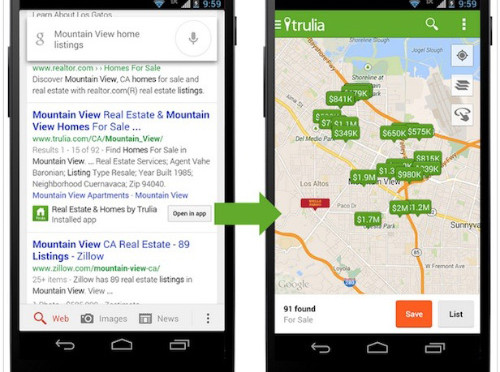In today’s fast moving digital world, websites largely depend on a different set of strategies to stay ahead than those used ten years ago. In today’s era, most of the people are searching on Google using their mobile devices.
At a famous event in October 2016, Google’s Webmaster Trends Analyst Gary Illyes announced that Google will create a separate mobile index within the next few months. This mobile index will become the main Google index with the desktop version. This is going to change the game all across for every business.
At present, it does not matter if you search from your desktop or a mobile device, you will get the same results. However, in the near future, this is surely going to change. Google has now started testing its mobile first index. This latest mobile index will first look at the mobile version of your website for its ranking and then later on finally fall back to the desktop version if there is no mobile version to be found. Google has been thinking about the idea of the mobile index since a long time that is more than a year but the process has been implemented and worked upon recently. It has been predicted that around 75% of the searches made in 2017 will be made on mobile devices. With these latest announcements, the website owners have no choice but to adapt to the latest ongoing trend to maintain traffic and rankings. A website that is optimized for mobile SEO is accountable to a different set of customers, search algorithms, and other technical implementations. Mobile search is not only for trendsetters but also for the online and in-store shoppers, Smartphone users and also for the not so tech-savvy.
Among the various mobile indexed websites that claim to have SEO as a priority, one thing is sure. Every SEO approach will now own a piece of that mobile first index puzzle. To put it forward in simple words, a website cannot attain mobile-first index success without first attaining high levels of responsive web design, optimized data and fast loading time among some of the other internal SEO strategies.
In fact, some business brands have started embracing these mobile first constraints down to such a level that their mobile optimized websites rival their desktop counterparts. It is believed that mobile-first index will affect how Google will rank your website, determine the authority and will decide if your content is relevant or not based on Google’s guidelines. Although the mobile index will continue to be a single index of website and app, the Google algorithm will primarily use the mobile version of a particular site’s content to rank pages from that site to understand the structured data and to show a few snippets from the mentioned pages in the search results.
A mobile first index site will have three options. Either the website will be responsive, or it has a separate mobile site and lastly it does not have a mobile site at all.
How to Judge whether a Mobile First Index will impact your site?
If your website falls in any of the three categories, then you will surely be impacted for the switch to a mobile first index.
- Mobile usually serves a different content than desktop.
- Mobile removed structured data from a desktop.
It is said that if one has a mobile friendly website, then they are surely lucky.
Here are a few tips for a Mobile first Index website:
1. Plug up your websites Pages into Google’s Mobile-Friendly Test
If one is managing multiple client websites or if you are a small business owner, the first thing that you need to do is to check whether the pages pass Google’s Mobile-Friendly Test. To check, one should start with the key navigation pages to plug in one by one. This would be a bit time consuming but surely it is going to provide you with excellent results.
If you do not have a mobile responsive site, then you should start with an implementation strategy before Google rolls out the Mobile first index.
2. Verify that your Mobile Pages are Being Indexed
One can easily forget to index their mobile websites. You need to type in your Smartphone and check whether a mobile is indexing your pages to Google or not. If nothing shows up, then it is clear that Google is not able to access your mobile pages.
3. Review Smartphone Errors in Google Search Console
Another important thing is to examine your Smartphone errors in Google Search Console. Depending on the errors that come out, you can move further. A common mistake that is often seen is a faulty redirect. A faulty redirect is when a desktop page is redirected to a Smartphone page that is not relevant to the particular search query. Cleaning these errors will allow Google to index your content better.
4. Update Mobile Content to Reflect Desktop Content
If you have a separate mobile site, then make sure to cross check the content that is published on the desktop as well as the mobile site. There are many mobile websites that are much lighter in content to maintain the page speed. With the new mobile first index, having diverse content on mobile and desktop can cause some major traffic and keyword loss down the line.
5. Remove Hidden Content in Your Tabs and Accordions
Double check to make sure that the content is visible to all users on desktop and mobile. Web designers and developers have a common approach to hide content in mobile to make the design appear clear. Every SEO marketer should look out for hidden content.
6. Add Structured Data on Your Mobile Version Pages
There are times when implementing structured data on a site, webmasters might skip adding them to the mobile site. With the new mobile first index, if you want to keep your structured data, you will have to add it to your mobile pages as well.
7. If you don’t Have Mobile Pages, Launch AMP Pages
Many times there are chances that you will not have the time to create mobile pages for your site. In such cases, you can create an AMP version for these pages. Google will use the AMP version to index even without the mobile friendly version.
8. Mobile Design
The SEO today has to know and understand more than just code and ranking. They should be very much familiar with how to use a design to influence rankings. The mobile design is an art in itself.
9. Maintain a Link Building Strategy
It is said that links could pose a problem in the future because users do not usually link to the mobile compared to desktop. There is a transition to mobile-first index but building links to your desktop pages are still vital to your SEO success.
10. Verify Your Subdomains
Once you upload your subdomains to Google Search Console, you will receive notifications for your mobile site. Google will notify you regarding any actions taken. As per Google, these subdomains are treated as two separate lines, so data needs to be collected on both the sides.
11. Optimize on-site SEO for Mobile
With the coming up of a mobile first index, one needs to rethink about the on-site SEO strategy that is from title tags to headers. For instance, the length of title tags is different on mobile when compared to desktop.
12. Speed
Making sure your site loads fast is essential to rank on mobile. Large images can slow down a site. So optimizing images to the correct size is a great achievement. You can also maintain speed by leveraging browser caching. Too many redirects can also take a lot of time to reload and provides you with a slow experience.
On a concluding note, it can be stated that, if you are planning to create a mobile version of your site, then keep in mind that a functional desktop-oriented site is far better than an incomplete mobile version of the site. It would be much better to launch your mobile site once it is thoroughly complete.




